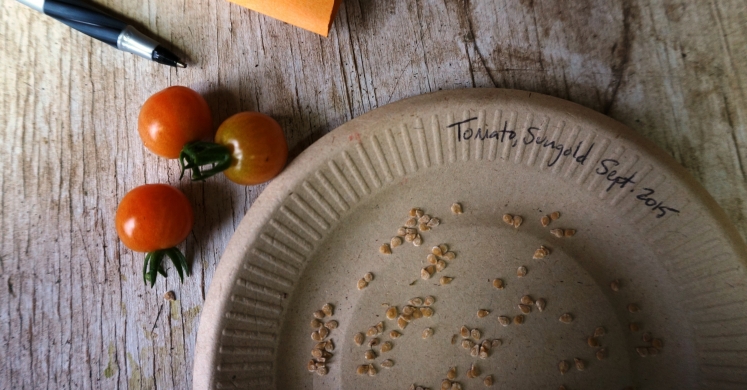Blog

Saving Seeds
Before your garden is done producing for the season, consider saving some seed! Seed saving is an easy, free way to restock your seed collection for next year. Saving your own seed saves money, and allows you to continue growing the best version of your favorite varieties from year to year. When you save seed you can choose to save from your best plants, the ones that are growing well in your specific area, so over time you’ll end up with high quality plants best adapted to your soil, climate and conditions.
In addition to collecting great seed for your garden, by saving seed you can help make sure heirloom plant varieties continue to be around long into the future. Many large seed companies sell limited varieties, and hybrid and genetically modified seed. Saving seed, even on a small scale, helps maintain crop diversity.
Many types of seed are very easy to save, but the time and timing required vary by plant variety. If you just want to dip your toe into seed saving, try starting with marigolds or peas, which are very easy to save. For specific information on saving a few different kinds of seeds, read on below. First, a few tips for saving any type of seed:
Save seed from the right plants. Save from open-pollinated crops (not hybrid- if you save seeds from hybrids, they may grow plants that are different from their parent plant). Choose your best, most productive, most flavorful plants to save seed from.
- Label seeds right away with the variety, date, and any notes about the plant you’d like to remember.
- Allow for thorough drying. Seeds should be allowed to dry until they are completely dry and almost brittle, to ensure good storage and avoid mold.
- Store properly. Seeds can be saved in any airtight container, like a jar or envelope, and should be kept in a cool, dry place. You can keep seeds in the refrigerator or freezer for extra long storage, but it’s not necessary.
How to Save Seeds
Flowers: Marigolds and Calendula
These are very easy to save: simply wait until the flowers look dry and brown on the plant, then break open the dry flower heads to release the seeds.
Peas and Beans
Also easy to save: allow some pods to turn brown on the vine, open the dried pods and empty out the seeds. Place in a single layer to dry, and allow several weeks to fully dry.
Peppers
Peppers are self-pollinating, but note that if two varieties are planted near each other they can sometimes cross pollinate. If you want to make sure your saved pepper seeds are the same as their parent plant, grow only one variety of pepper, cover the plants with row cover, or separate varieties by 500 feet.
To save pepper seeds: cut open a pepper, brush seeds off the central stem, and place in a single layer to dry.
Tomatoes
Tomatoes are the most involved seeds to save on this list. Tomato seeds are coated in a gel, and a fermentation process is used to release them from the gel before saving. To save tomato seeds:
Slice a very or over ripe tomato in half; squeeze the gel covered seeds into a jar.
Add some water to cover the seeds.
Let the jar sit at room temperature to ferment. Swirl or stir the jar once a day.It may smell and develop mold, this is ok!
After 2-3 days, viable seeds will sink to the bottom.Carefully pour off as much of the liquid as you can and rinse the seeds several times until they’re clean (a mesh colander is helpful).
Spread the seeds out evenly in a single layer to dry for several weeks, then store.

